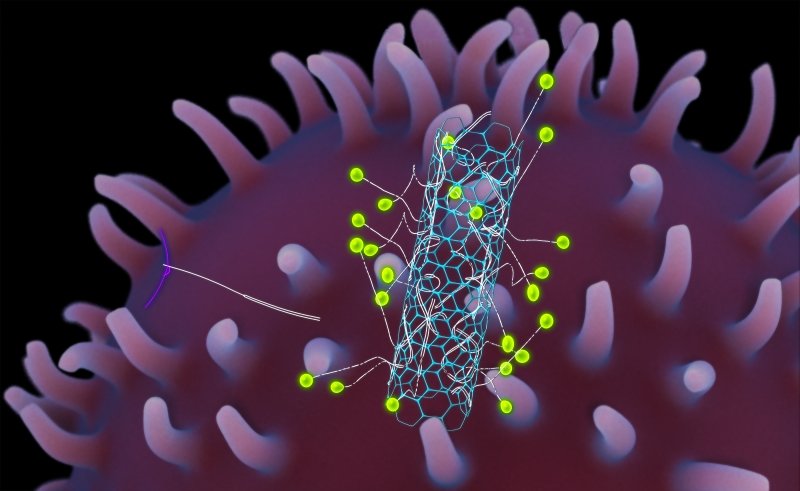10/19/2020—
StabiLux Biosciences, a spin-out company from research conducted at Michigan Technological University, has received an additional $500,000 supplementary grant from the National Science Foundation (NSF). This new NSF Small Business Technology Transfer (STTR) Phase IIB project, led by Nazmiye Yapici, Ph.D. ‘13, and Dongyan Zhang, adjunct associate professor in physics, will support the commercialization of high-brightness dyes for medical uses.
StabiLux fluorescent dyes can be a thousand times brighter than any existing dye molecule. The dyes emit fluorescence in various colors and can be labeled with desired antibodies for specific antigen detection. They were developed by Yapici, Zhang, and Yoke Khin Yap, professor of physics, University Professor, and the founder of StabiLux.

StabiLux fluorophore technology brings high-brightness dyes to bear against previously undetectable early-stage diseases. Image Credit: StabiLux
“We anticipate our technology will have a significant impact in the field of flow cytometry, and allow scientists to detect what was previously undetectable, specifically rare antigens on blood cells,” Yapici said.
The new NSF funding, along with the original Phase I, Phase II project and other supplementary grants, brings NSF funding for StabiLux research to more than $1.6 million. The Phase IIB award is a match from the NSF after the company received outside investments of more than $1 million led by Steve Tokarz, StabiLux CEO.
The new grant will allow StabiLux to refine its high-brightness dyes into commercial-grade products over the next 12 to 24 months. The technology was established based on a series of NSF grants, including the NSF I-Corps team project led by Zhang in 2014.
The technology has also received commercialization grants from the state of Michigan and the Michigan Economic Development Corporation.
“This is truly a platform technology that can revitalize any organic dye that is not bright into a series of novel high-brightness dyes with tunable brightness and high photostability,” Yap said. “Organic dyes are biologically compatible and cost effective for many biomedical applications. Making the organic dyes brighter will enhance current diagnosis technology for early diseases detection that are currently undetectable.”
Michigan Technological University is an R1 public research university founded in 1885 in Houghton, and is home to nearly 7,500 students from more than 60 countries around the world. Consistently ranked among the best universities in the country for return on investment, Michigan's flagship technological university offers more than 185 undergraduate and graduate degree programs in science and technology, engineering, computing, forestry, business, health professions, humanities, mathematics, social sciences, and the arts. The rural campus is situated just miles from Lake Superior in Michigan's Upper Peninsula, offering year-round opportunities for outdoor adventure.